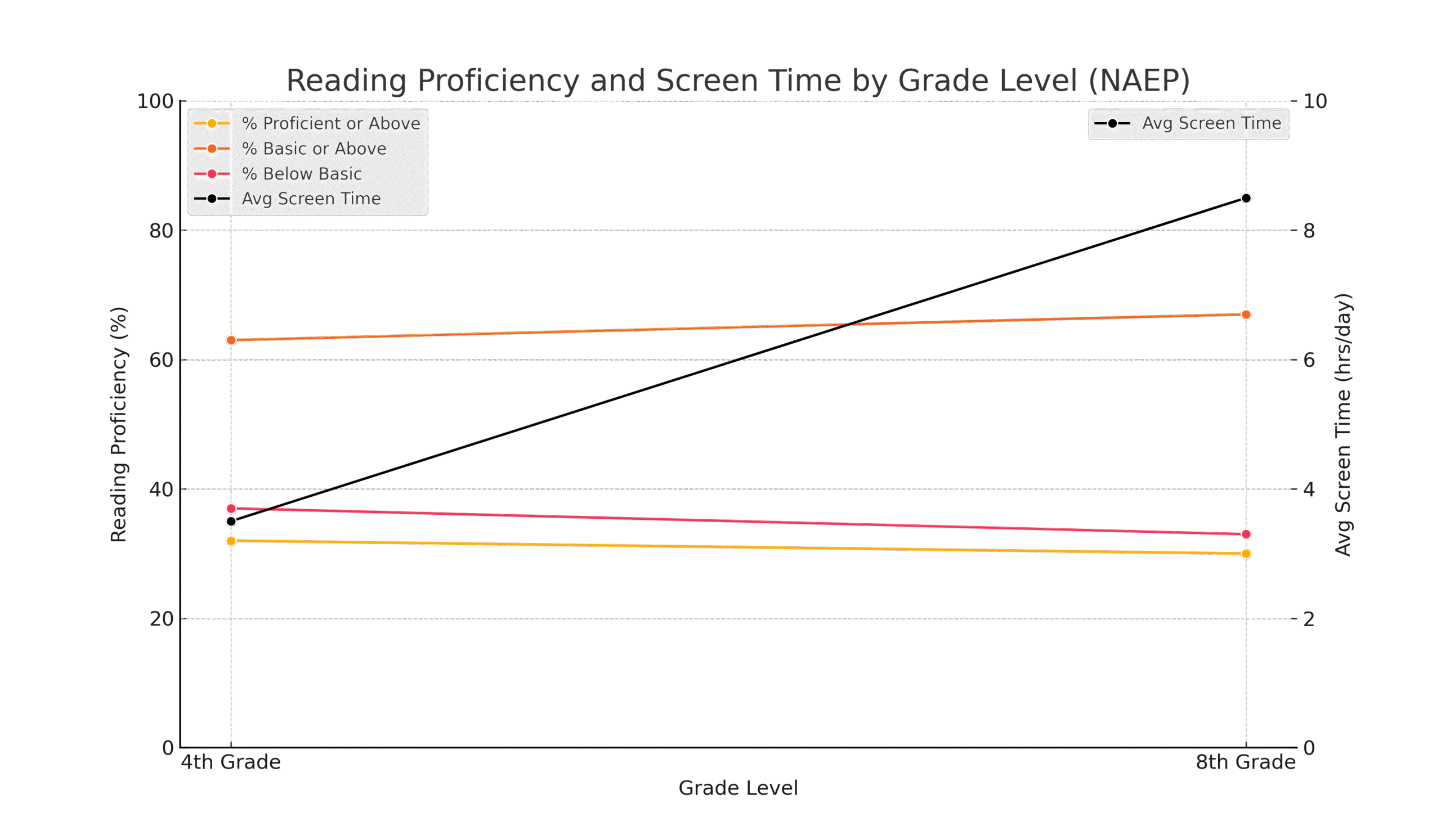A Digital Tug-of-War
The screentime struggle is real.
We’re not just seeing a dip in reading scores—we’re watching a growing divide.
Research shows (NAEP 2022/2024) that as screen time increases with age and time, literacy remains flat or declines.
Kids ages 5 to 8 spend around 3½ hours a day on screens
By age 14, that number nearly triples to 9 hours, driven by short-form videos, gaming, and social media.
Yet only 15 minutes a day is spent reading for pleasure.
As a result, two-thirds of U.S. students still read below grade level, with more than a third below even basic benchmarks.
While technology races ahead, too many children are falling behind in the one skill that shapes everything else: literacy.
Parents are exhausted.
Teachers are overwhelmed.
Kids are left with tools that deliver content, but don’t change behavior.
Screentime Grows. Proficiency Doesn’t.





